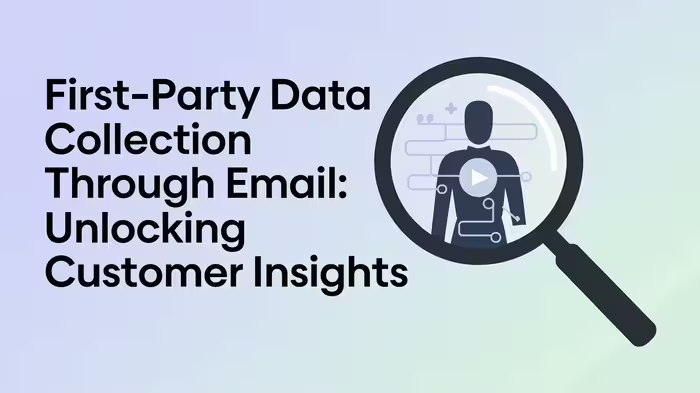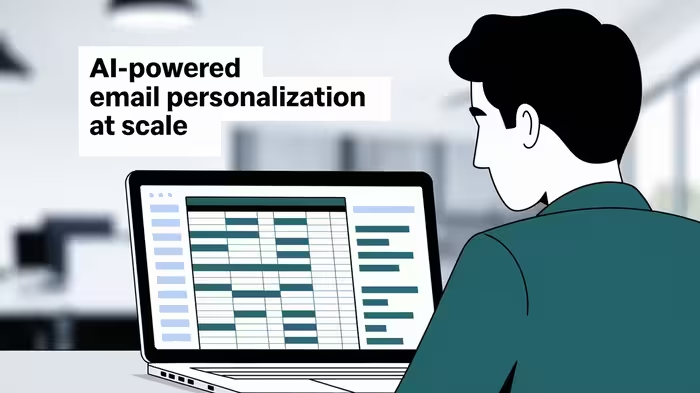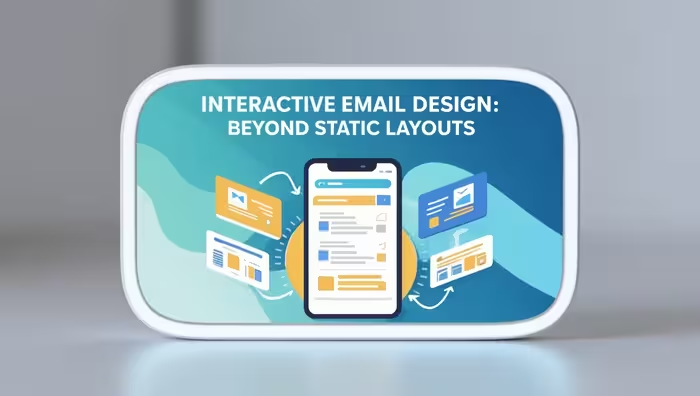In today’s digital age, data is the new gold. Companies are always on the lookout for ways to gather valuable information about their customers. One of the most effective and direct methods to collect this precious data is through email. Let’s dive into the world of first-party data collection through email and discover how it can transform your business.
Understanding First-Party Data
Definition and Importance
First-party data is information that your company collects directly from your customers. It’s the most valuable type of data because it comes straight from the source. This data can include anything from basic contact information to detailed preferences and behaviors.
Why is first-party data so important? Well, imagine you’re trying to bake a cake. Would you rather use ingredients you bought yourself from a trusted store, or ingredients someone else handed to you without telling you where they came from? First-party data is like those ingredients you carefully selected yourself. You know exactly where it came from and how fresh it is.
Types of First-Party Data
There are several types of first-party data you can collect through email:
- Demographic data: This includes basic information like age, gender, and location.
- Behavioral data: This shows how customers interact with your emails and website.
- Preference data: This reveals what your customers like and dislike.
- Purchase history: This tells you what products or services your customers have bought from you.
The Power of Email in Data Collection
Why Email Remains a Valuable Channel
You might be thinking, “Isn’t email old news? Shouldn’t we focus on newer platforms?” Well, email is like that trusty old bike in your garage. It might not be the flashiest thing around, but it still gets you where you need to go reliably and efficiently.
Email remains one of the most widely used forms of communication. According to Statista, there were 4 billion email users worldwide in 2020, and this number is expected to grow to 4.6 billion by 2025. That’s a lot of potential data sources!
Benefits of Email-Based Data Collection
Collecting data through email offers several advantages:
- Direct communication: Email provides a direct line to your customers.
- Cost-effective: Compared to other marketing channels, email is relatively inexpensive.
- Customizable: You can tailor your data collection efforts to your specific needs.
- Measurable: Email platforms offer robust analytics to track your efforts.
Strategies for Collecting First-Party Data via Email
Sign-Up Forms and Preference Centers
The journey of email-based data collection often begins with a sign-up form. This is like the welcome mat to your data collection house. Make it inviting! Ask for essential information, but don’t overwhelm your visitors.
Preference centers take this a step further. They allow customers to tell you exactly what they’re interested in. It’s like giving them a menu and asking them to choose their favorite dishes. This not only provides you with valuable data but also ensures your future communications will be more relevant to them.
Surveys and Feedback Requests
Surveys are a goldmine of first-party data. They allow you to ask specific questions and gather detailed insights. But remember, nobody likes a survey that feels like a never-ending interrogation. Keep it short, sweet, and to the point.
Feedback requests are another great way to collect data. After a purchase or interaction, send an email asking for their thoughts. It’s like asking a friend, “How was your day?” You’re showing you care while also gathering valuable information.
Behavioral Tracking in Email Campaigns
Behavioral tracking involves monitoring how recipients interact with your emails. Which links do they click? What time do they usually open your emails? This data can provide insights into your customers’ preferences and habits.
For example, if you notice a customer frequently clicks on links related to a specific product category, you can tailor future emails to focus more on that category.
Best Practices for Email-Based Data Collection
Transparency and Consent
In the world of data collection, honesty is always the best policy. Be clear about what data you’re collecting and why. It’s like telling a friend why you’re asking them personal questions – they’re more likely to share if they understand the reason.
Always get consent before collecting data. This isn’t just good manners; in many places, it’s the law. Regulations like GDPR in Europe and CCPA in California require explicit consent for data collection.
Value Exchange
People are more willing to share their data if they get something in return. This could be exclusive content, special offers, or a more personalized experience. Think of it as a trade – they give you information, and you give them something valuable in return.
Data Security and Privacy
Protecting the data you collect is crucial. Imagine if you shared a secret with a friend, only to find out they told everyone else. You wouldn’t trust them with your secrets again, would you? The same applies to data. Use secure systems to store and process the data you collect.
Leveraging First-Party Data in Email Marketing
Personalization and Segmentation
Once you’ve collected first-party data, you can use it to create more personalized email campaigns. This could be as simple as using a customer’s name in the email, or as complex as recommending products based on their past purchases.
Segmentation involves dividing your email list into smaller groups based on shared characteristics. For example, you might create separate segments for new customers, frequent buyers, and inactive users. This allows you to tailor your messages to each group’s specific needs and interests.
Predictive Analytics and Customer Insights
First-party data can fuel predictive analytics, helping you anticipate customer behavior. It’s like being able to read your customers’ minds! You can predict what they might want to buy next, when they’re most likely to make a purchase, or what kind of content they’ll find most engaging.
These insights can help you create more effective email campaigns, improve customer retention, and ultimately drive more sales.
Challenges and Solutions in Email Data Collection
Overcoming Low Response Rates
One common challenge in email data collection is low response rates. It’s like throwing a party and having only a few people show up. To overcome this:
- Offer incentives for participation
- Keep your requests short and simple
- Explain the benefits of providing data
- Send reminders, but don’t be pushy
Maintaining Data Quality
Ensuring the accuracy and relevance of your data is crucial. Bad data is like a faulty compass – it’ll lead you in the wrong direction. Regularly clean your email list, removing inactive subscribers and correcting errors. Also, provide easy ways for subscribers to update their information.
Future Trends in First-Party Data and Email Marketing
The world of first-party data collection through email is constantly evolving. Some trends to watch out for include:
- Increased use of AI and machine learning in data analysis
- Greater emphasis on real-time data collection and application
- More integration between email and other marketing channels
- Growing importance of data privacy and security measures
As technology advances, the possibilities for leveraging first-party data in email marketing will only grow. It’s an exciting time to be in this field!
Conclusion
First-party data collection through email is a powerful tool for understanding your customers and improving your marketing efforts. By implementing the strategies and best practices we’ve discussed, you can unlock valuable insights that will help your business grow.
Remember, the key is to always respect your customers’ privacy, provide value in exchange for their data, and use the insights you gain to create better experiences for them. Happy data collecting!
FAQs
- Q: Is first-party data better than third-party data?
A: Generally, yes. First-party data is more reliable and relevant because it comes directly from your customers. It’s also not available to your competitors, giving you a unique advantage. - Q: How often should I send emails requesting data from my customers?
A: There’s no one-size-fits-all answer, but a good rule of thumb is to space out your requests. Sending a data collection email once every couple of months is usually safe, but always monitor your unsubscribe rates. - Q: What’s the best way to encourage customers to fill out surveys?
A: Offer an incentive (like a discount or entry into a prize draw), keep the survey short, explain how their input will be used to improve their experience, and send a reminder email to those who haven’t responded. - Q: How can I ensure I’m complying with data protection laws?
A: Always be transparent about what data you’re collecting and why, get explicit consent, provide options to opt-out, and ensure you have robust security measures in place. Consider consulting with a legal expert to ensure full compliance. - Q: Can I buy email lists to expand my first-party data collection?
A: It’s not recommended. Purchased lists often contain outdated information and people who haven’t agreed to receive your emails. This can harm your sender reputation and may violate data protection laws. Focus on growing your list organically instead.


